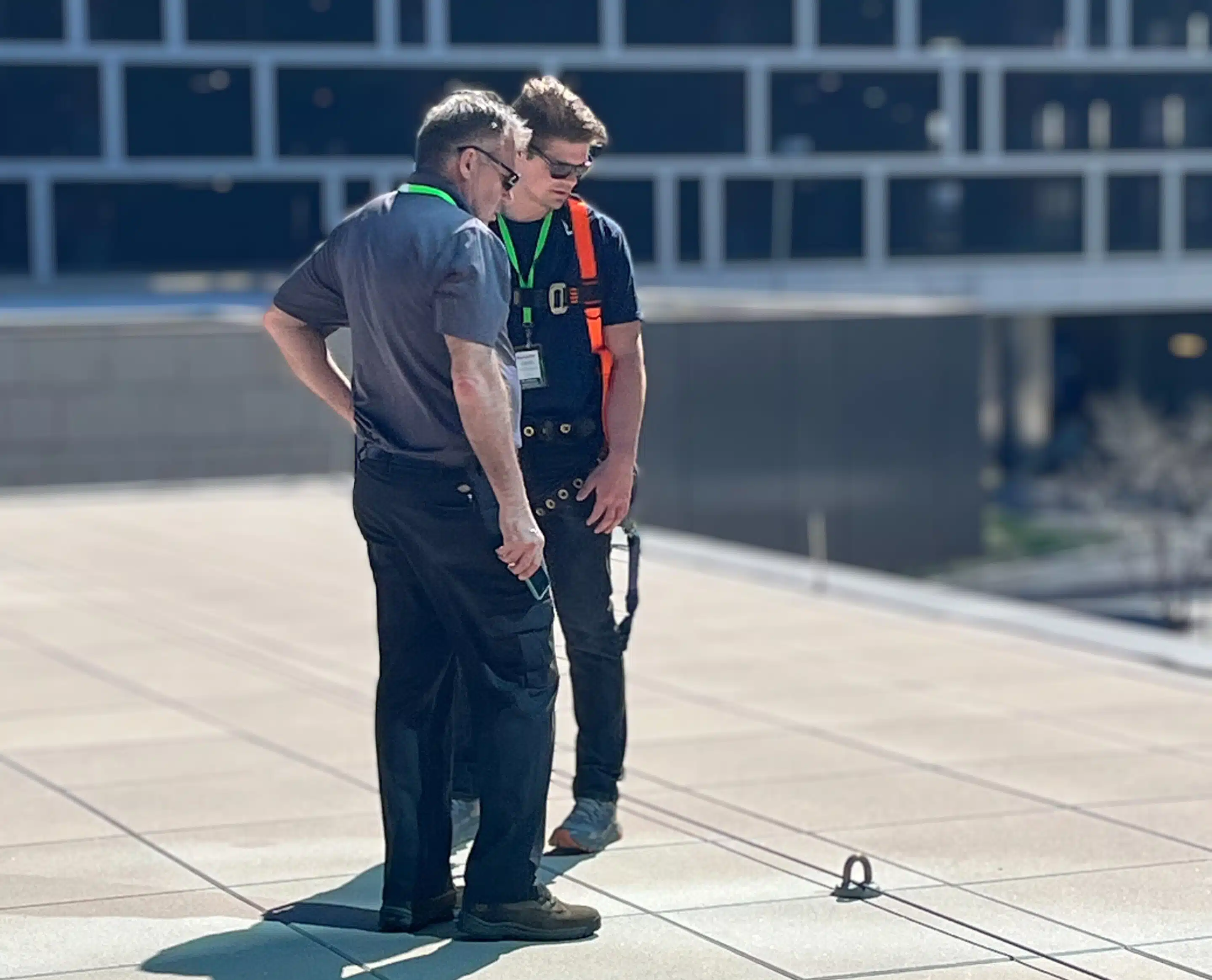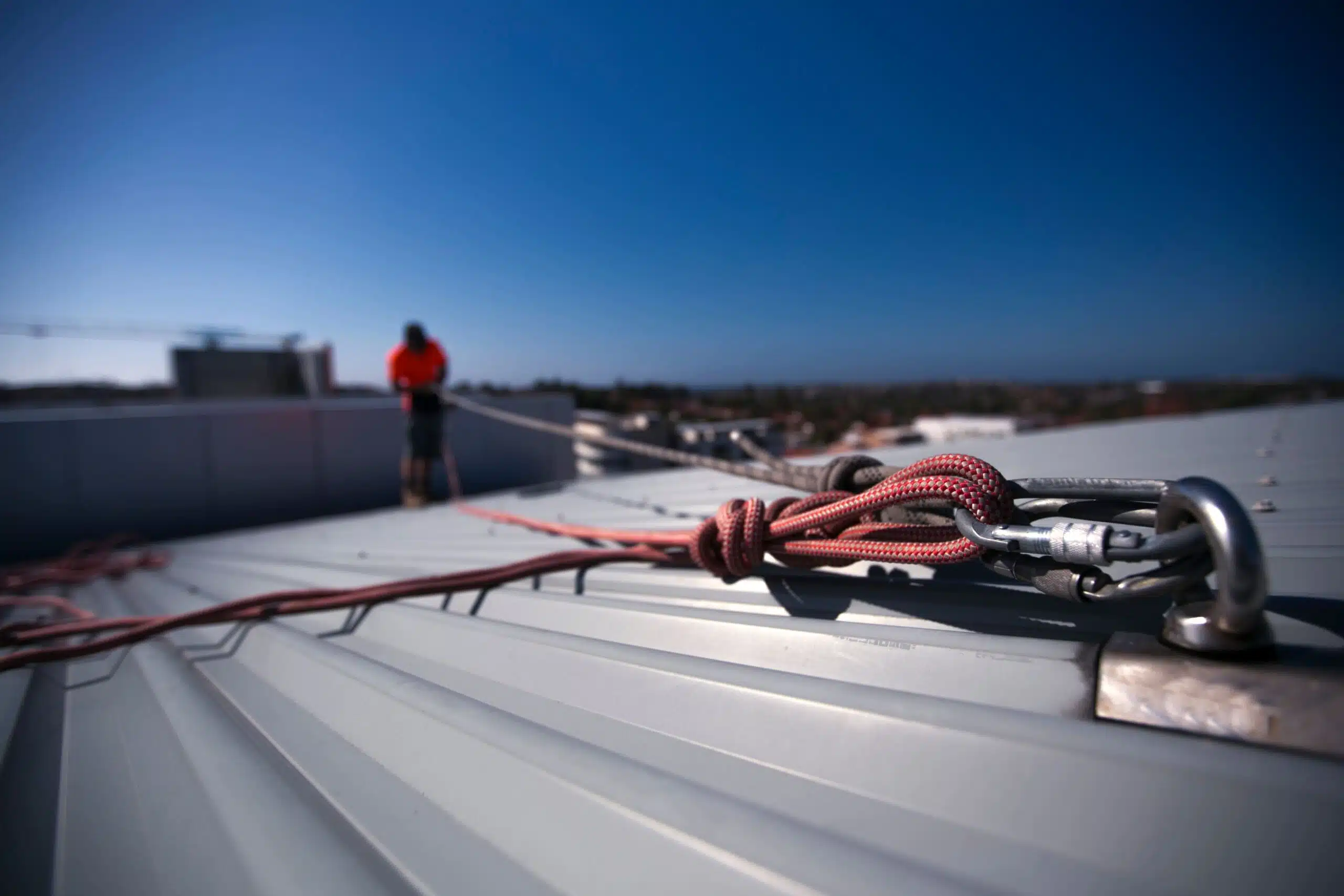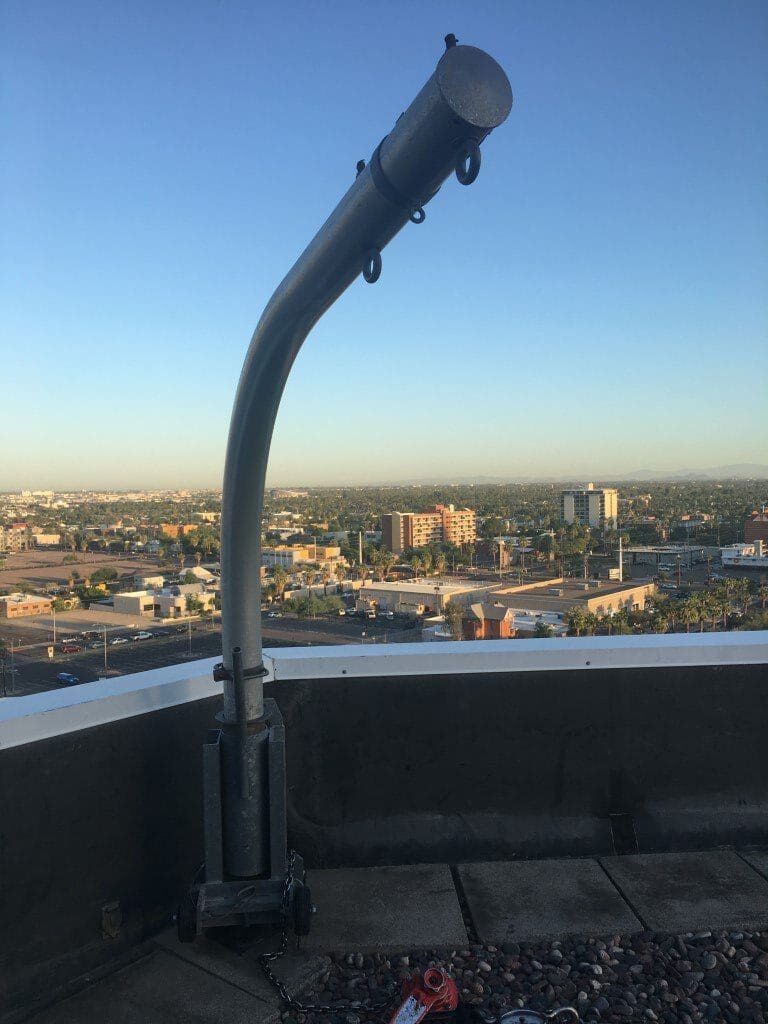Roof fall protection was the #1 OSHA safety violation in 2022. OSHA provides this information annually to alert organizations to major issues, so they can take the steps necessary to make changes and prevent future citations. Fall protection remains a major issue, however, landing in the top 5 violations every year since 2007. The consequences for an OSHA citation are increasing:
This year, a single incident will receive a penalty fine of $15,625, and repeat or willful offenders will be charged $156,259.
But more important than the financial ramifications are the health and safety risks to employees. We’d like to share our knowledge from 14 years of rooftop safety engineering to ensure you meet all OSHA requirements and will keep your employees and contractors happy and healthy.
Rooftop Fall Protection Rules
Worker safety is something that every business needs to consider and address. Fall injuries account for a huge portion of workers’ compensation claims each year. First off, you should know the current rooftop safety and fall protection requirements, such as ANSI Z359.1 and OSHA’s fall protection standard §1926.501. For example each employee on a horizontal or vertical walking/working surface with an unprotected side or edge which is 6 feet or more above a lower level must be protected from falling. As of 2017, employers are no longer required to utilize a guardrail system, but can choose from a variety of rooftop fall protection options.
Rooftop Fall Protection Options
Guardrails
Guardrails are a straightforward method of rooftop safety. They’re generally metal post-and-upright rail systems that can be permanently mounted or non-penetrative weighted systems. The can be installed at the edge of a roof, around hatches and openings, and around skylights to ensure safe operation across the entire roof. Additionally, during times of construction and maintenance, temporary and portable guardrails can be installed.
Safety Net Systems
Safety nets provide a dual benefit—they not only minimize fall risk, they can also prevent damage to property and people below from falling debris. To meet OSHA standards, they must be placed as close as possible to the working surface, and never more than 30 feet below. The horizontal distance outward from the building must be between 8-13 feet, depending on the height and distance from the work surface. Because of these requirements and their ability to protect from debris, they are most useful in a construction situation, and less convenient for everyday safety application.
Fall Arrest Systems
Fall arrest is a rooftop fall protection method that utilizes Personal Fall Arrest Systems (PFAS). The worker wears a full-body harness, and the rooftop is engineered with a system of tie-off anchor points and davits. A lanyard or self-retracting lifeline is secured between the rooftop safety points and the employee’s personal harness. In a Fall Arrest System, the lifeline offers enough give that the worker could possibly reach and fall of the roof edge, but would be prevented from falling a dangerous distance. While this system does allow for the possibility of a fall, it can be useful or necessary in situations that require more movement flexibility on the employee’s part. Loading or unloading trucks or railcars on a raised surface is a scenario when you’d need to have full access to the edge of a rooftop. Another situation that would require Fall Arrest is any occasion when employees need to climb or descend a ladder.
Fall Restraint Systems
Fall Restraint Systems are similar to Fall Arrest Systems in that they involve anchors, tie-off points, lanyards, and harnesses. The main difference between the two is that, while Fall Arrest Systems stop an in-process fall, Fall Restraint Systems prevent a fall from ever happening. The lanyards they employ are at a length short enough that the employee is never able to reach the edge of the building, thus preventing a fall entirely when used properly. These are ideal in situations when the rooftop is a wide open space, with no work required near or over the edge of the building.
Active Fall Protective Systems
Both Fall Arrest and Fall Restraint Systems are considered Active Fall Protective Systems. This indicates that the employee must actively engage with the safety system for its successful use. The employee must properly wear the harness, clip the lanyard to the harness, and ensure they are securely attached to their anchor points or tie-off. The key components of an Active Fall Protective System are:
Tie-off Equipment
Tie-off points, safety anchors, and davits all fall under the category of tie-off equipment. These components must be inspected and certified for OSHA compliance annually. They require a load-bearing test to reach 2,500 lbs when pulled in pairs.
Lanyards
Proper lanyards allow your workers to be connected to anchors safely. Self-retracting lanyards can minimize momentum if there is a fall. High-quality, safe lanyards offer features such as slip-braking, which decreases the arresting force from a fall and can increase a worker’s ability to rescue themselves rather than waiting for help.
Harnesses
The final fall protection system component is the harness. Each employee should have a quality, properly fitted harness to ensure off-the-ground safety. Full-body harnesses and harnesses that come with quick-fastening buckles will allow each employee to get a perfect fit. Features such as built-in pads increase comfort and ensure durability and effectiveness.
Benefits of a well-maintained Rooftop Fall Protection System
By employing the proper Rooftop Fall Protection System and staying compliant with industry regulations:
OSHA predicts that 29 fatalities and 5,842 lost-workday injuries will be prevented every year.
The peace of mind, both regarding personal safety and financial penalty, are more than worth the effort of compliance. To ensure you’re maintaining systems that are safe and up to standards, it’s best practice to utilize the service of a company that specializes in rooftop safety engineering.
Wikstrom Engineering Consulting, P.C. has over 14 years of experience and clients across the country—we perform over 375 inspections annually to ensure the safety and compliance of rooftop fall protection systems. Put your employees in the hands of experts you can trust.




